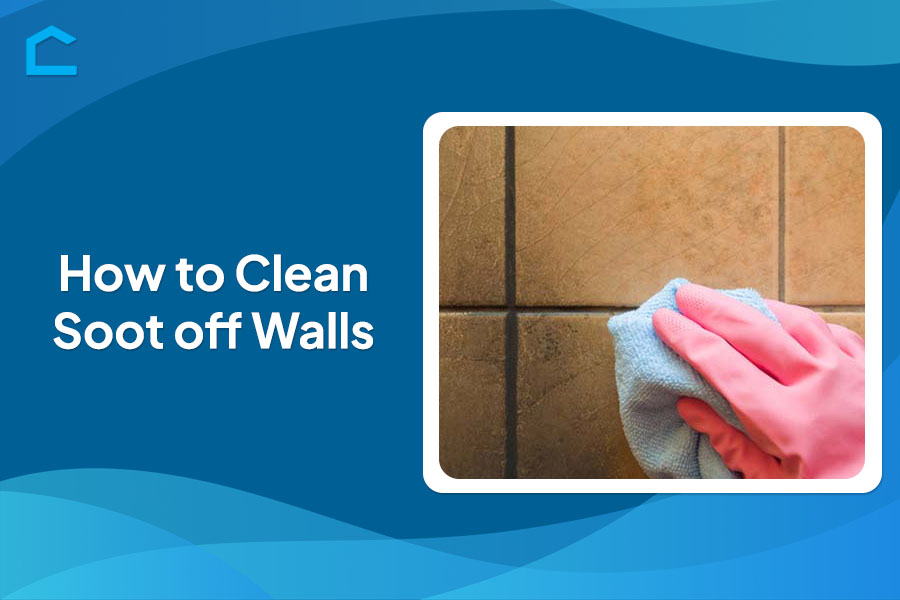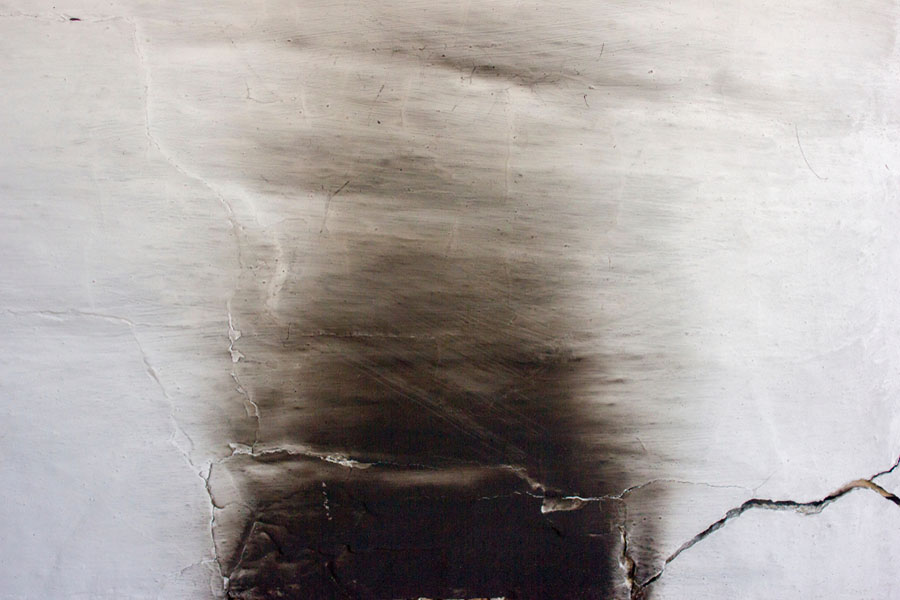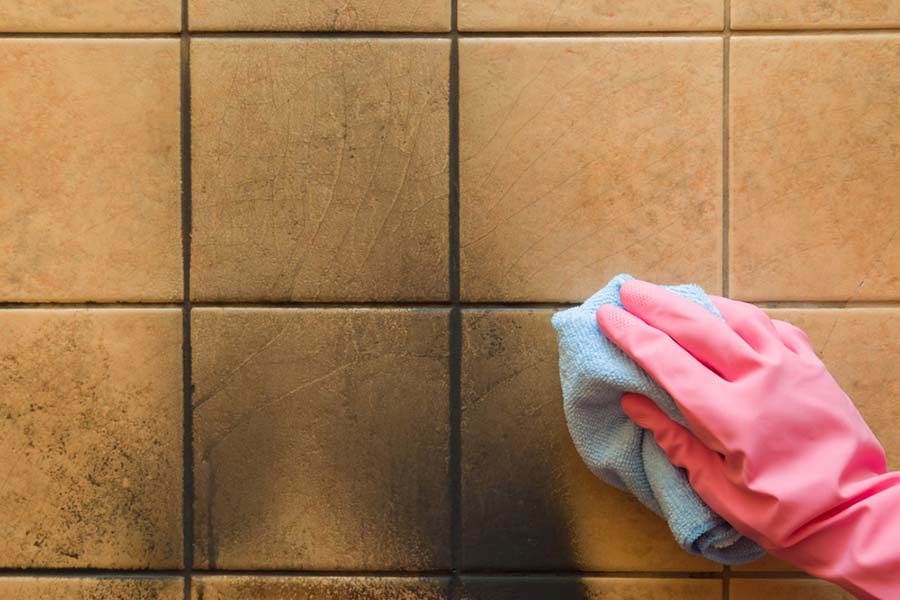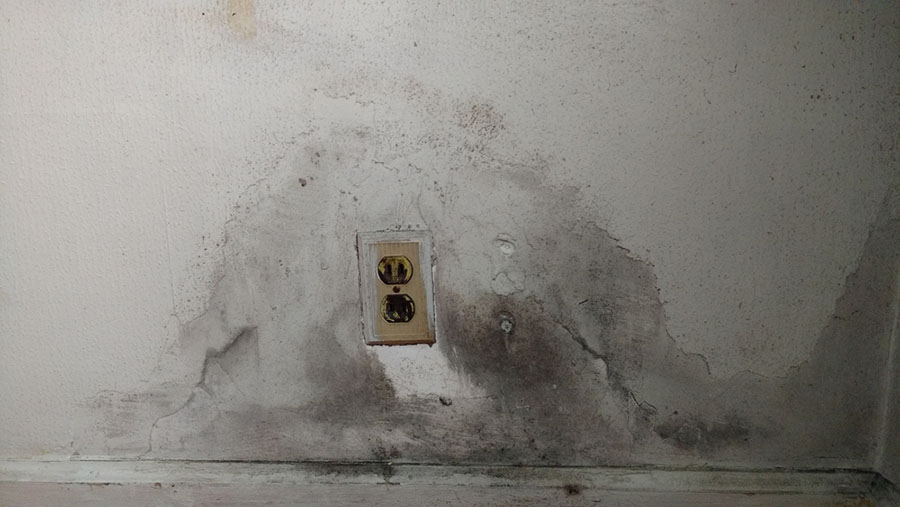How to Clean Soot off Walls

Soot can accumulate on walls from various sources, such as candles, fireplaces, cooking, or a malfunctioning heating system. Not only does it blemish the appearance of your walls, but it may also pose health risks if left unattended for too long. But with the right techniques and products, you can learn how to clean soot off walls.
In this comprehensive guide, we’ll explore the various methods for removing soot from walls, ensuring a thorough cleaning process without causing further damage. From identifying the right cleaning solutions to understanding the precautions necessary for different wall surfaces, we’ve got you covered.
Don’t let soot stains overpower your living environment any longer. Join us and learn more!

Source: shutterstock.com / Photo Contributor: Art_rich
How to Clean Soot Off Walls
Effective cleaning methods vary based on the surface type and severity of soot buildup. After a house fire, soot accumulation can be significant. Restoring your walls to their original cleanliness is crucial for maintaining a healthy indoor environment.
While you can always hire professional fire restoration services to clean the soot off the walls for you, here are our simple steps for cleaning smoke damage on walls and ceilings:
Preparation
Knowing the type of wall material is important when cleaning soot off walls. Different materials require different cleaning methods. For instance, painted drywall requires a gentler approach than wallpaper or plaster.
So, are you wondering how to remove black smoke from painted walls? Start by assessing the damage. Before you begin cleaning, take your time to evaluate how much soot has affected your walls carefully.
This step helps you choose the right cleaning methods and avoid causing more damage. Also, open windows and doors while you clean soot-stained walls to ensure good ventilation.
Dry cleaning
Begin by gently wiping the walls with a dry cloth or sponge. This helps remove loose soot particles that haven’t stuck to the surface yet. But we advise you to avoid rubbing too hard to prevent spreading or embedding the soot.
Next, use a soft, lint-free cloth or a clean sponge for this process. Work in sections and fold the cloth or sponge to expose a clean surface as you go. Dry cleaning is crucial before moving on to wet cleaning methods.
Vacuuming
After the initial dry wipe-down, you should use a vacuum cleaner equipped with a soft brush attachment. This helps to remove any loose soot left on the walls. Be gentle as you run the brush over the affected areas to avoid damaging the surface.
Make sure to vacuum in overlapping sections to ensure thorough cleaning. Afterward, empty or replace the vacuum bag or filter to prevent the soot from being redistributed into the air.
Wet cleaning
If stubborn soot stains persist even after dry cleaning and vacuuming, it’s time to use a mild detergent solution. Mix a small amount of dish soap or a mild detergent with water in a bucket. Dip a sponge or microfiber cloth into the solution and gently wipe down the walls, focusing on the stained areas.
The detergent will help lift and remove the soot stains without harming the wall material. Then, rinse the sponge or cloth often in clean water to prevent soot from spreading. Work in small sections and dry the area promptly after cleaning to prevent water damage or streaks.

Source: shutterstock.com / Photo Contributor: FotoDuets
Baking soda
If you’re dealing with black smoke stains on painted walls, try baking soda. Start by creating a paste with baking soda and a small amount of water until it’s spreadable. Apply this paste directly onto the stains and let it sit for a few minutes.
Next, gently scrub the area using circular motions with a sponge or cloth. The baking soda’s abrasiveness will help lift the stains, but be careful not to scrub too hard to avoid damaging the paint. Finally, rinse the area thoroughly with clean water to remove any leftover baking soda residue.
Vinegar solution
Another household ingredient that can help remove black smoke stains from painted walls is vinegar. In a spray bottle, combine equal parts vinegar and water and give it a good shake. Directly spray the solution onto the affected areas and allow it a few minutes to work its magic.
Afterward, grab a clean cloth or sponge to wipe away the stains gently. Vinegar’s acidity aids in breaking down the stubborn smoke residue. Just a heads up, it’s wise to test the vinegar solution on a hidden spot first to avoid any potential paint damage.
Commercial removers
Consider using a commercial soot remover product if you’re dealing with particularly stubborn or widespread smoke stains. These products are specifically designed to remove smoke stains from walls.
Before applying, test the product on a small, hidden area to check for potential damage or discoloration. We must also emphasize that you should always follow the instructions closely.
When using these cleaners, also prioritize safety by wearing protective gloves and ensuring good ventilation. Depending on the product, you may need to scrub or agitate the area to remove the stains completely.
Drying and Inspection
After cleaning soot off your walls, it’s crucial to allow them to air dry thoroughly to prevent moisture damage from showing, such as mold growth, paint bubbling, or peeling. Adequate ventilation helps expedite the drying process.
Once dry, you need to inspect the walls under good lighting to ensure all soot residues have been completely removed. Pay close attention to any remaining discoloration or stains, as these areas may require additional cleaning.
If stubborn stains persist, you can repeat the cleaning process as needed, applying gentle but persistent cleaning methods to achieve optimal results. So, thorough drying and careful inspection are essential to ensure your walls are soot-free and left with a refreshed surface.

Source: shutterstock.com / Photo Contributor: Mflo786
Conclusion
Dealing with soot stains on your walls requires prompt and effective action to maintain aesthetics and health. As said, whether from candles, fireplaces, or cooking mishaps, soot buildup can tarnish your living space and pose risks if neglected.
However, with the right techniques and products, you can restore your walls to their pristine condition. Each step is crucial in achieving optimal results, from identifying the right cleaning solutions to thorough drying and inspection.
By diligently following our expert tips on how to clean soot off walls, you can remove soot from your walls and create a fresh, inviting atmosphere. Restore your walls to their former glory!
